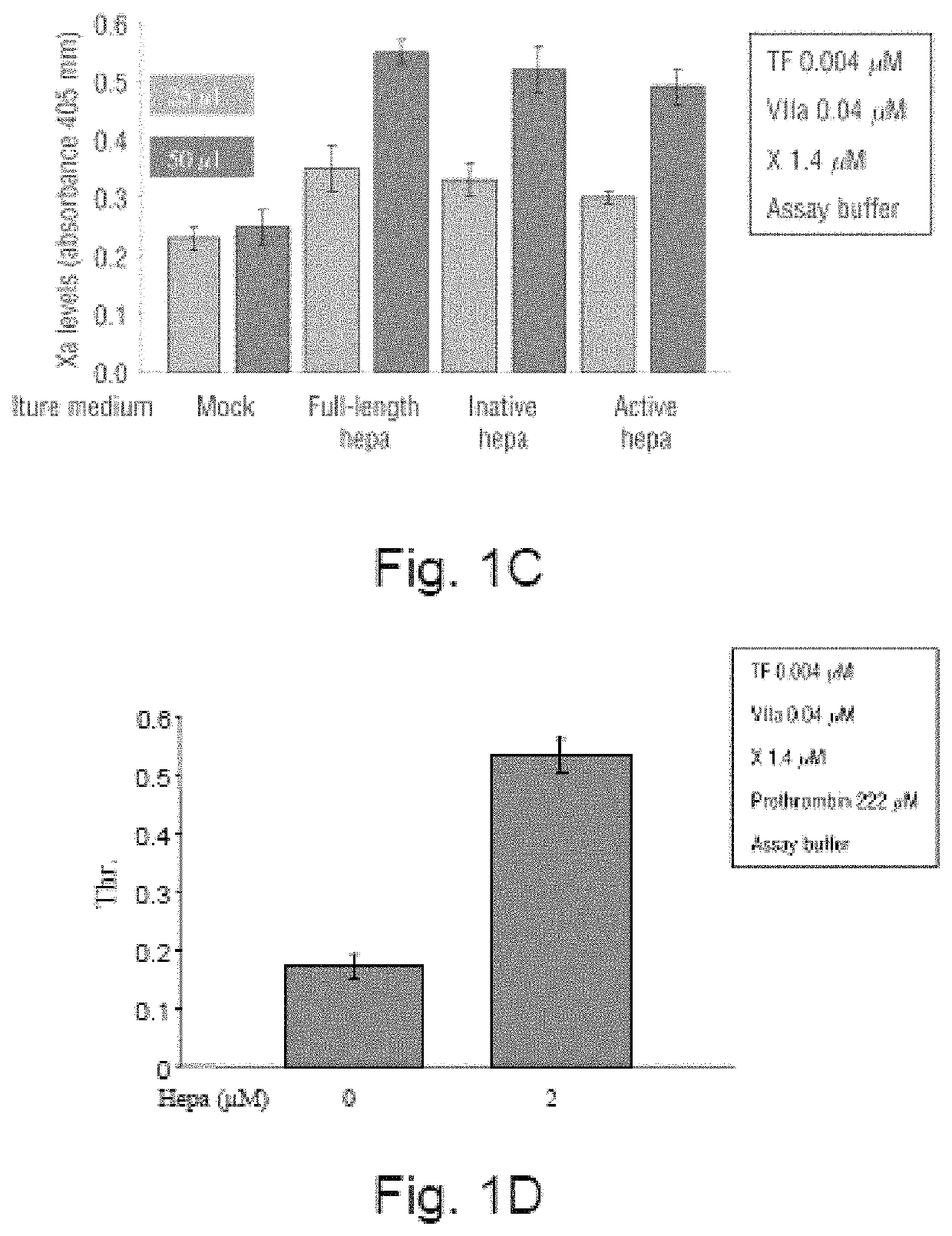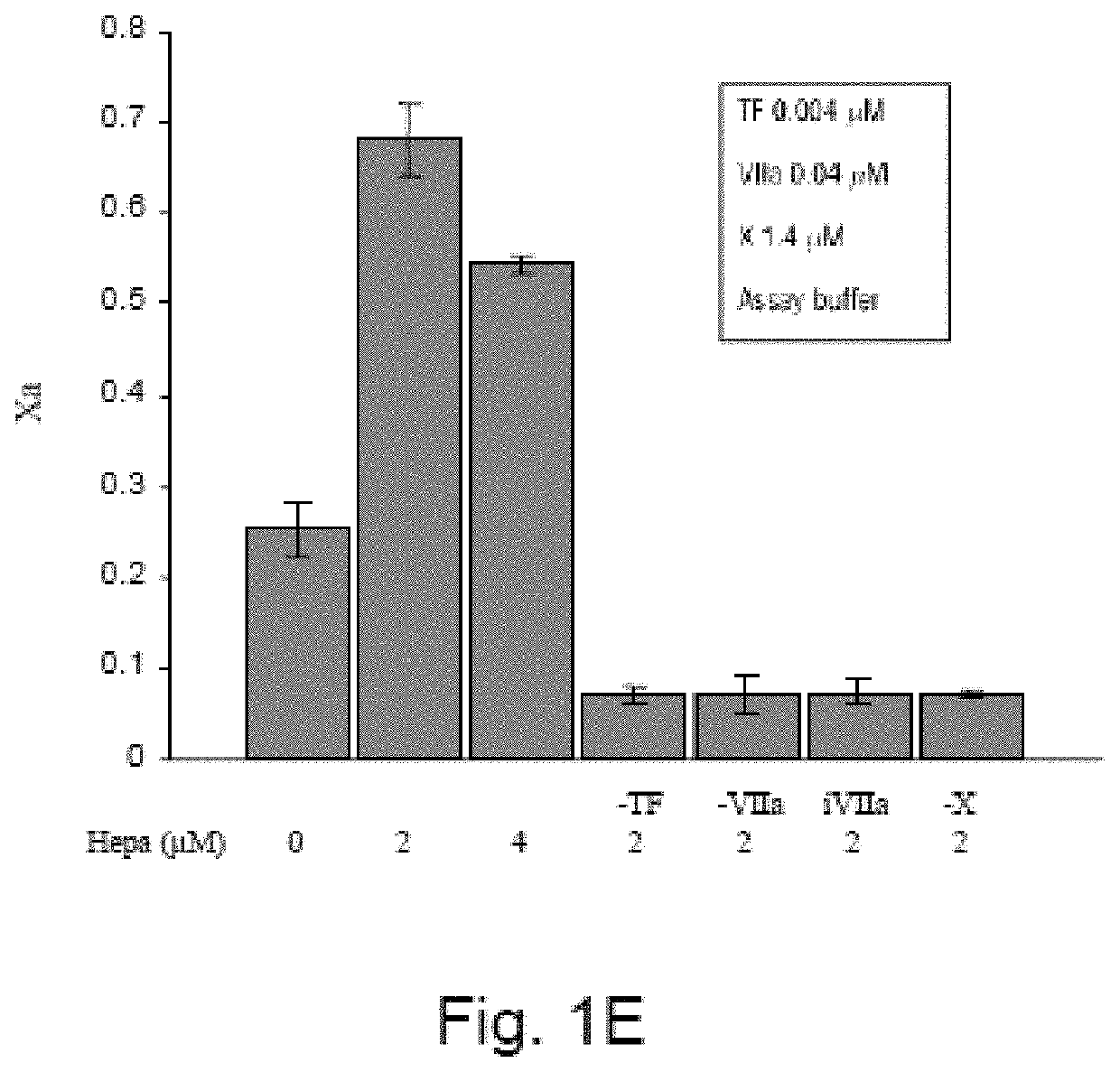Methods and kits for assessing Heparanase procoagulant activity, compositions comprising Heparanase, and methods for the treatment of coagulation-related disorders
a technology of procoagulant activity and heparanase, which is applied in the field of inhibitory peptides, can solve the problems of shunts and prostheses such as artificial heart valves, affecting the coagulation process, and causing rapid and complete inhibition of clotting
- Summary
- Abstract
- Description
- Claims
- Application Information
AI Technical Summary
Benefits of technology
Problems solved by technology
Method used
Image
Examples
example a
Heparanase Procoagulant Activity
[0376]Design and Methods
[0377]Study Group
[0378]Thirty five consecutive patients with newly diagnosed acute leukemia were enrolled over a 7-month period. The patient's age ranged from 18-78 (mean, 47±20 years), 21 males and 14 females. Twenty-two patients had acute myeloid leukemia M1-2, nine had acute myeloid leukemia M4-5 and four had acute lymphocytic leukemia. The patients were diagnosed according to established morphological, immunophenotypic and molecular criteria. After obtaining informed consent, peripheral blood was taken at the time of diagnosis and prior to chemotherapy treatment. The patients were followed-up prospectively for the occurrence of symptomatic thrombotic manifestations during the first month following the start of chemotherapy. Twenty control samples were obtained from healthy donors (age 24-55, mean 36±12 years, 14 males and 6 females). A total of 3 ml of peripheral blood was collected, applying sodium citrate 3.2% (0.12 M) so...
example a1
[0395]Heparanase Increases Activated Factor X Levels
[0396]The factor Xa generation assay was performed as described in the Design and Methods section with increasing doses of recombinant human heparanase (GS3) added prior to the addition of the coagulation factors. Surprisingly, heparanase increased factor Xa production in a dose-dependent manner visualized by a chromogenic substrate (FIG. 1A) and by western blot (FIG. 1B). It should be noted that factor X is composed of two polypeptide chains, a heavy chain with a molecular weight of 38 kDa and a light chain with a molecular weight of 18 kDa joined by a dipeptide Arg-Arg. The factor VIIa-TF complex activates the conversion of factor X to factor Xa by cleaving the heavy chain to a 33 kDa peptide. The factor Xa produced in the presence of heparanase has the same molecular weight as factor Xa produced without heparanase, indicating that the site of cleavage in factor X heavy chain is most likely the same. In order to exclude contamina...
example a2
[0397]Heparanase Increases Thrombin Levels
[0398]In order to verify that factor Xa produced in the presence of heparanase is active, thrombin generation, the next step in the coagulation cascade, was examined. The experiment described above (FIG. 1A) was repeated and plasma-derived human prothrombin (222 μM) was added following the addition of factor X. After 15 minutes at 37° C., chromogenic substrate for thrombin was added (1 mM). In the presence of heparanase, thrombine generation was increased (FIG. 1D).
PUM
| Property | Measurement | Unit |
|---|---|---|
| volume | aaaaa | aaaaa |
| total volume | aaaaa | aaaaa |
| volume | aaaaa | aaaaa |
Abstract
Description
Claims
Application Information
 Login to View More
Login to View More - R&D
- Intellectual Property
- Life Sciences
- Materials
- Tech Scout
- Unparalleled Data Quality
- Higher Quality Content
- 60% Fewer Hallucinations
Browse by: Latest US Patents, China's latest patents, Technical Efficacy Thesaurus, Application Domain, Technology Topic, Popular Technical Reports.
© 2025 PatSnap. All rights reserved.Legal|Privacy policy|Modern Slavery Act Transparency Statement|Sitemap|About US| Contact US: help@patsnap.com



